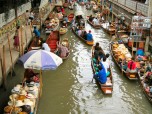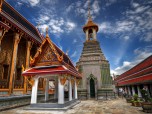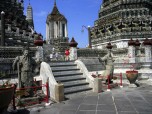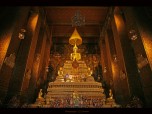Once called the Bangkok Remand Prison, the Bangkok Corrections Museum is now a popular attraction in the midst of the busy, jostling city. Its exhibits, however, are not for the faint of heart.
Early History
The Bangkok Remand Prison was founded in 1890 in the Trokkam District on Mahachai Road. The initial prisoners incarcerated there were convicted of major crimes. Later, the prison housed those convicted of lesser crimes.
The prison was crowded and living conditions were poor. Finally, in 1970, another prison was established. The original site was finally officially named the Bangkok Remand Prison after 1973. In 1991, the prisoners were relocated to another prison, though the name remained the same. The century-old prison was transformed into a museum to celebrate Queen Elizabeth II’s 60th birthday.
The prison has been expanded to house a growing number of inmates. Those incarcerated in the Bangkok Remand Prison are serving sentences of seven years or less. People awaiting trial are also kept there.
Birth of the Museum
The Bangkok Corrections Museum is surrounded by a park called Rommani Nart, which was created when the building became a museum in the early 1990’s. Of the original structure, two watchtowers, one cellblock and a section of the original prison wall have been preserved.
Highlights
Sometimes called a “museum of the macabre,” the Bangkok Corrections Museum features weapons and punishment tools that may be difficult to look at. These relics, both older and from the recent past, demonstrate the severity of the punishments given out by Thailand’s penal system.
Some exhibits even feature wax figures that demonstrate how particular punishments were carried out. The figures are complete with period clothes and faces contorted in pain.
One of the most mind-blowing exhibits features a human-sized rattan ball covered with nails pointing inward. As punishment, prisoners were placed inside the ball, which was then kicked around by an elephant.
While the Bangkok Corrections Museum shows some of the punishments the prisoners were forced to endure, it also shows what daily life was like through more peaceful exhibits.
Hand-made goods produced by prisoners throughout Thailand are on exhibit and also are available for visitors to buy.
































